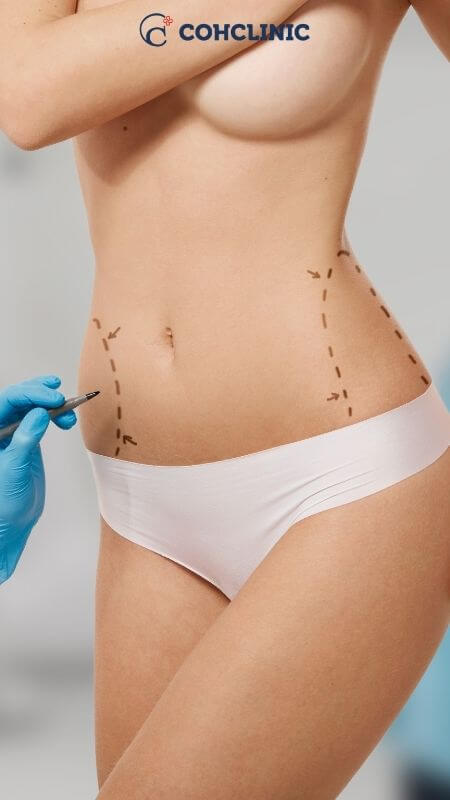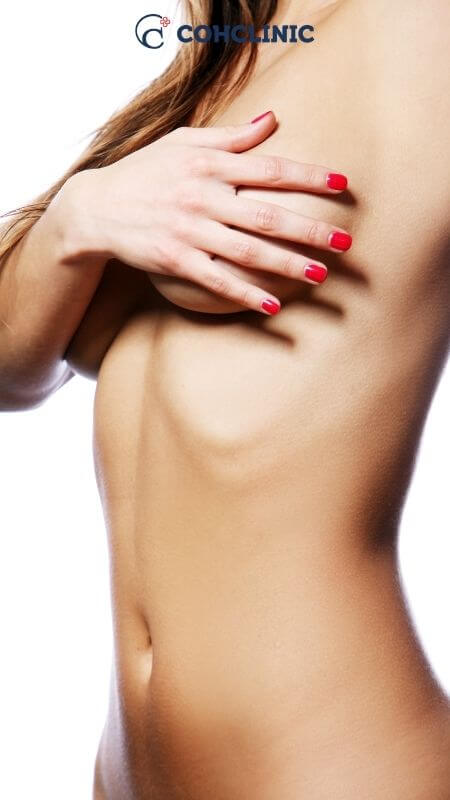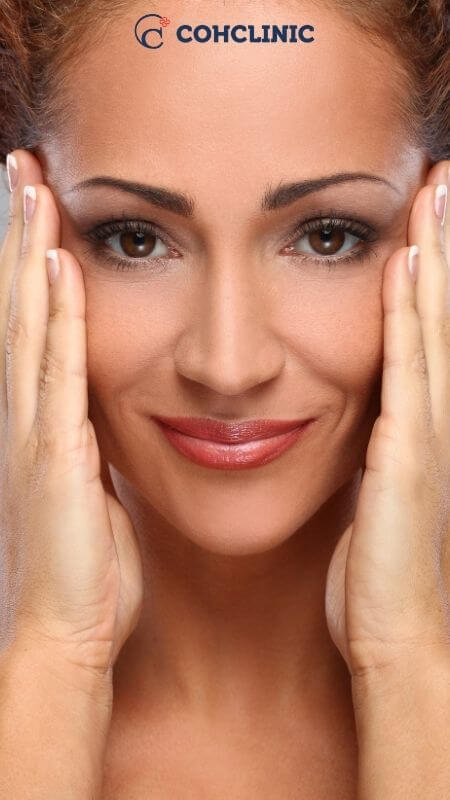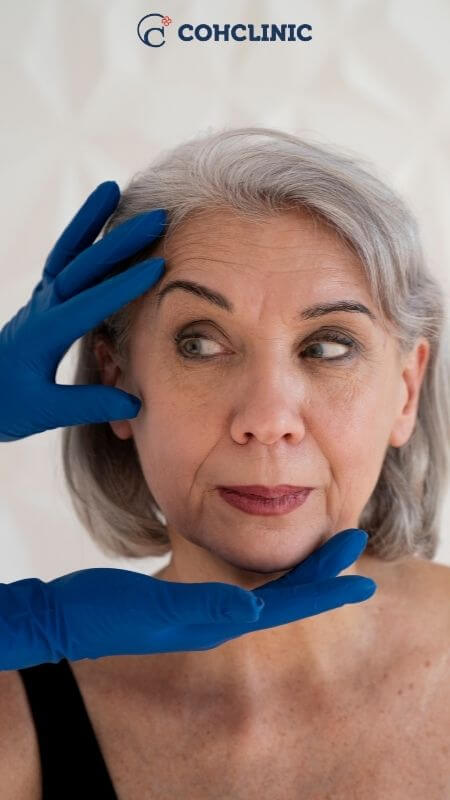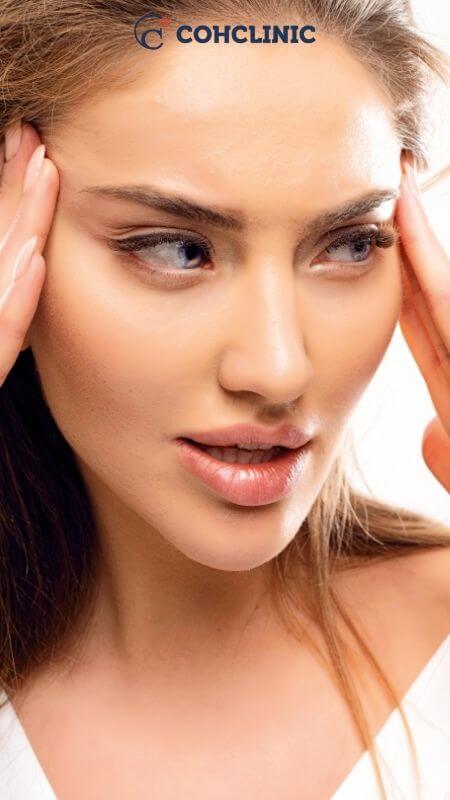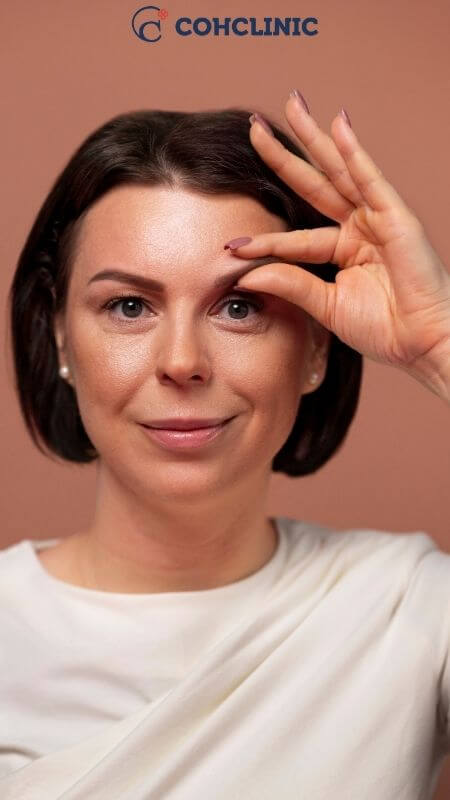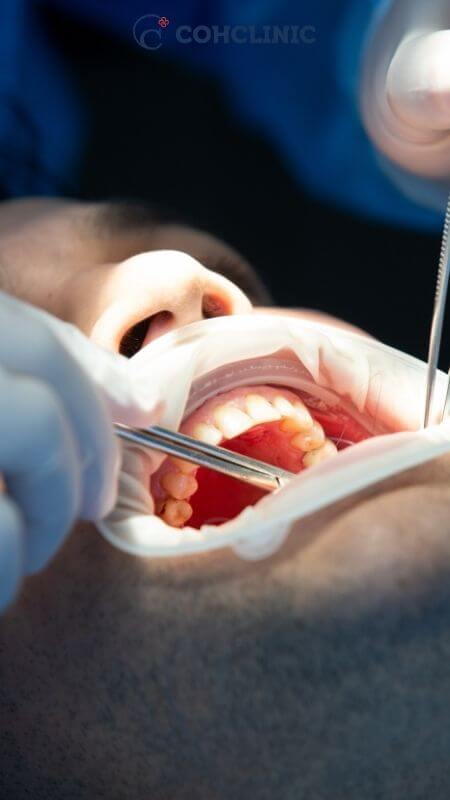Blepharoplasty is a highly sought-after facial plastic surgery procedure, serving both functional and cosmetic purposes. When performed by skilled surgeons, it is generally a low-risk procedure that can greatly enhance one’s appearance. The surgery is safe and effective.
What is eyelid aesthetic?
Cosmetic eyelid surgery, known in the medical field as blepharoplasty, involves the meticulous enhancement of both the upper and lower eyelids. This procedure focuses on reinvigorating the contours around the eyes by tightening drooping skin and eliminating surplus muscle tissue. Skilled aesthetic and plastic surgeons are typically responsible for conducting the intricate process of blepharoplasty.
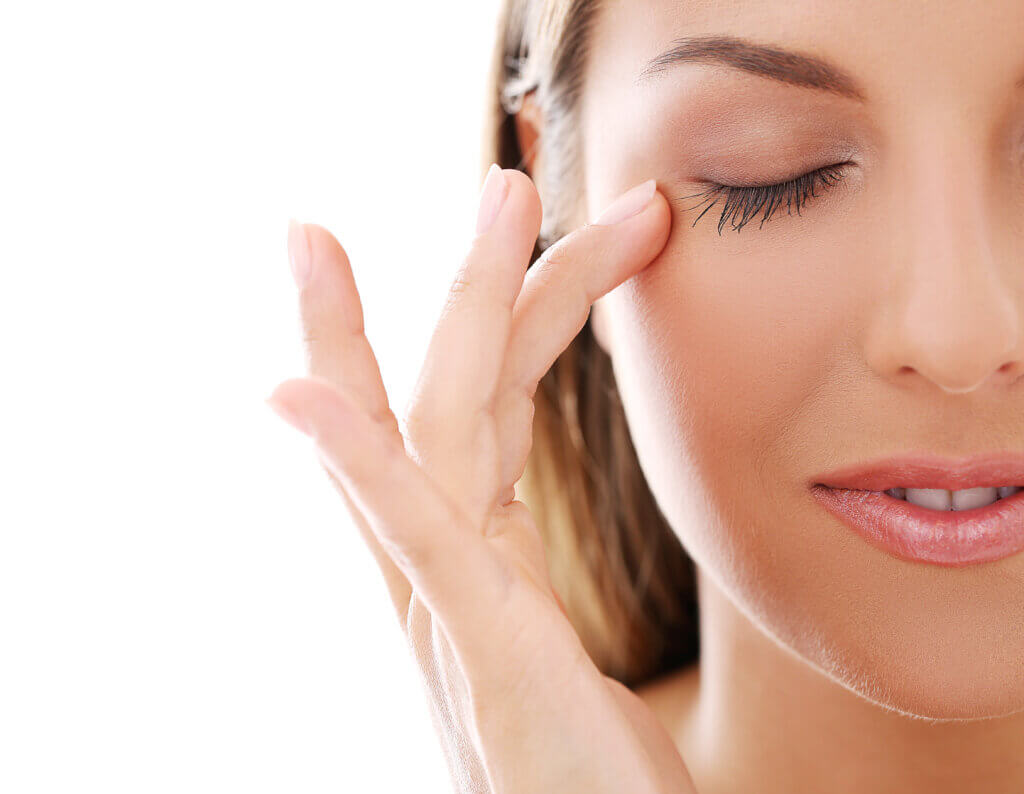
As individuals age, the natural effects of gravity contribute to the gradual sagging of the skin. Consequently, various manifestations emerge, including eyelid puffiness, slackened skin, pigmentation alterations, diminished elasticity, and the emergence of wrinkles. Environmental factors like prolonged exposure to sunlight, air pollution, irregular sleeping patterns, and habits such as excessive smoking and alcohol consumption can expedite the skin’s aging process. Blepharoplasty is a transformative surgical intervention that restores a more youthful appearance to the affected upper or lower eyelids. These eyelids are often influenced by aging phenomena.
What is the purpose of blepharoplasty?
Age causes our muscles to weaken and the skin to lose its suppleness. This causes a buildup of loose skin on the eyelids, resulting in deeper wrinkles in the lower lids and folds in the top one. Simultaneously, there is a weakening of the muscle beneath the skin, causing the fat that supports and cushions the eyes to bulge forward and seem baggier. The development of bags in early adulthood before any skin changes is a hereditary propensity in certain families.
Eyelid aesthetic procedures are customized to meet the patient’s specific needs. Excess skin is carefully removed with an emphasis on preserving eyelid function. If there’s an excess of oil, it is delicately addressed, and hollow areas can be filled as necessary. The goal is to achieve a balanced outcome, safeguarding the natural features of the eyelid. The surgical plan prioritizes patient needs, protects eye tissues, and seeks to enhance aesthetics and functionality while ensuring safety and well-being.
What are the eyelid problems?
Blepharoplasty, or Eyelid Aesthetics, is a viable option for individuals aiming to address concerns such as under-eye bags, wrinkles, and drooping. These concerns are often exacerbated by factors like irregular sleep patterns and the use of substances such as alcohol and cigarettes.
The natural aging process leads to a loss of skin elasticity, causing the skin to accumulate around the eyes. Symptoms such as discoloration, drooping upper eyelids, wrinkles, and crow’s feet can indicate these issues. Blepharoplasty can provide a rejuvenating solution, restoring a more youthful and refreshed facial appearance.
Can you get blepharoplasty at any age?
A minimum of their mid-30s is generally the age at which eyelid surgery is performed. The reason for this is that most people’s eyelids are already clearly affected by aging by this point. However, if you are at least 18 years old and are unhappy with the appearance of your eyelids, this surgery may be right for you.
If you are 18 years or older, you are may eligible for eyelid surgery, which is also referred to as blepharoplasty, irrespective of whether you have recently become dissatisfied with the look of your eyelids or have harbored this dissatisfaction for a longer duration. However, lower blepharoplasty is a suitable procedure if you have persistent under-eye bags.
An upper blepharoplasty is the ideal operation if you have loose and sagging skin on your upper eyelids. Additionally, if you are bothered by extra skin tissue, fat, or muscle, you could be an excellent candidate for either operation. However, you must be in generally good health to be eligible for an upper or lower blepharoplasty.
How is eyelid aesthetics performed?
Generally speaking, blepharoplasty takes 1-2 hours. After anesthesia, incisions are made on the upper eyelids along their natural lines and on the lower eyelids, right below the lashes. These incisions allow the skin to be removed from the underlying muscle and fat. Adipose tissue that protrudes is straightened, and extra skin and muscle tissue are cut away.
In the past, practically all surgeries included the evacuation of adipose tissue. However, it is now recognized that the contraction of adipose tissue associated with aging causes the eye hole to widen, making an individual seem older. Current surgery aims to maintain as much of the adipose tissue as possible. Very fine stitches are then used to seal the wounds.
A hidden incision is made inside the eyelid to remove any apparent scar tissue. This is done if the lower eyelids have bags of fat and muscle without any extra skin. It is typically used on younger people whose skin is more elastic.
Can upper and lower eyelids be done at the same time?
Lower eyelid surgery removes bags beneath the eyes and sagging tissue by improving the curve of the eyelid below. When necessary, this treatment can be carried out in addition to upper eyelid surgery. When both treatments are performed at the same time, patients can have one surgery and one at-home recovery period.
What are the risks of eyelid aesthetics?
Potential complications associated with this surgery include the risk of infection, issues related to anesthesia, such as adverse reactions, as well as post-operative concerns like swelling, bruising, and bleeding from the incision sites. Moreover, patients might experience dry eyes, sensitivity to light, difficulty in fully closing the eyes, delayed healing, numbness of the skin, persistent pain, and the potential necessity for additional corrective surgery. It is important to have a comprehensive discussion with the plastic surgeon regarding these potential risks before proceeding with the operation. Our clinic, COH Clinic, will methodically organize and implement our services to ensure that you receive the desired outcomes.
How long does it take to recover from blepharoplasty eyelid surgery?
You should normally be fully recovered from lower eyelid surgery in only 14 days. It takes a lot of energy, though, to recuperate following surgery. Recuperation time may be extended if you get both upper and lower blepharoplasty. It is normal to feel weary within the first 24 to 72 hours after surgery. However, each person’s recovery process after blepharoplasty is different. During this period in particular, make sure you get as much rest as your body needs.
You need to feel better by the eighth day of your recuperation. It’s still crucial to give your eyes as much rest as you can, though. You also can’t exercise too much, use alcohol, smoke, or expose yourself to extreme heat. Since these have the potential to greatly raise your blood pressure.
Blepharoplasty vs. Brow Lift
Your face might seem generally healthier, younger, and more rested with both a brow lift and eyelid surgery. Similar to blepharoplasty, the first wound healing following brow lift surgery takes around two weeks.
The primary distinction between the two aesthetic treatments is in the specific facial region that each technique targets:
- The skin and soft tissue of the forehead are the focus of a brow lift. However, an upper and lower blepharoplasty removes excess skin and fat from the eyelids.
- While a blepharoplasty might make the eyes seem better, the eyebrows are not moved. As an alternative, brow lift surgery elevates the eyebrows and enhances the look of the upper eyelids without excising any skin or fat.
- As opposed to blepharoplasty, which makes incisions along the upper eyelids’ natural creases, brow lift procedures are done along the hairline of the forehead.
Call Us Today
To get more detailed information about the costs, benefits, and potential risks associated with eyelid surgery, please reach out to us today at +90 (536) 934 6524 to schedule a consultation with our experienced team. We look forward to addressing any questions or concerns you may have. We will guide you through the process with the utmost care and attention.
Frequently Asked Questions
Do eyes look bigger after blepharoplasty?
Do eyes look bigger after blepharoplasty?
Although it can't increase the size of your eyes beyond their normal range, it can provide the illusion of greater size by eliminating extra skin and fat. It will revitalize your eyes and give you the young appearance you've always desired.
How painful is blepharoplasty?
How painful is blepharoplasty?
Patients often have minimal discomfort during the recovery phase following an upper lid blepharoplasty. Since the eyelid itself is not known to cause much discomfort, the procedure is rather simple and resembles a skin excision.
How long does blepharoplasty last?
How long does blepharoplasty last?
Your eyes will age even after a blepharoplasty. However, the effects typically endure for a long period. The duration of upper eyelid surgery varies from five to seven years to a lifetime, but lower eyelid surgery seldom requires repeat procedures.
Is it worth getting blepharoplasty?
Is it worth getting blepharoplasty?
Severe eyelid skin sagging can impair peripheral vision, or side vision, particularly in the outer and top regions of the visual field, in addition to aging. Reducing or eliminating these eyesight issues is possible with blepharoplasty. Additionally, younger-looking and more alert eyes can be produced by surgery.
What are the downsides of blepharoplasty?
What are the downsides of blepharoplasty?
There are a few possible disadvantages of blepharoplasty: Following surgery, it is usual to expect some degree of swelling and bruises. Additionally, you can get discomfort or dry eyes. Most of the time, these side effects are transient and minor.
